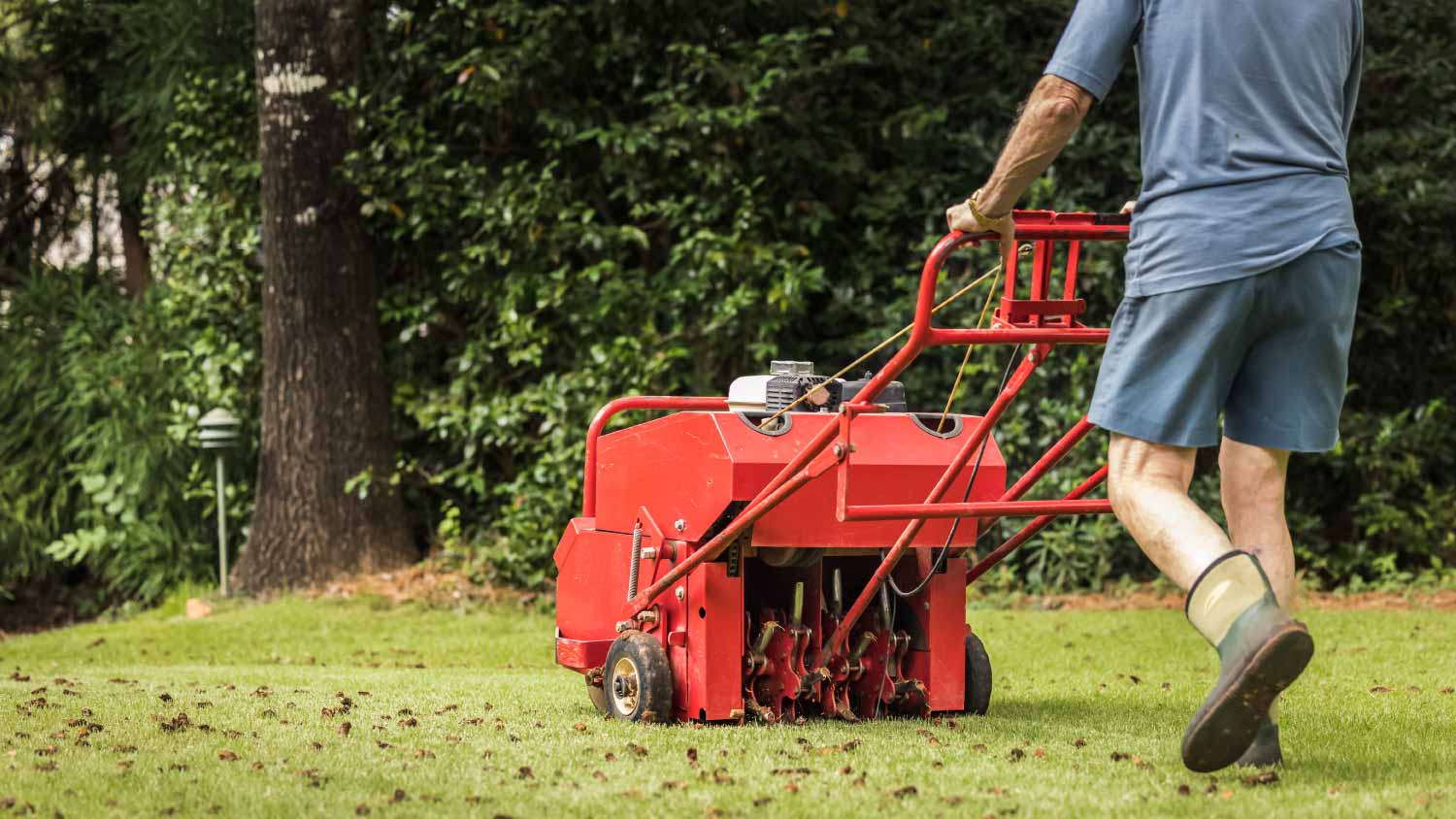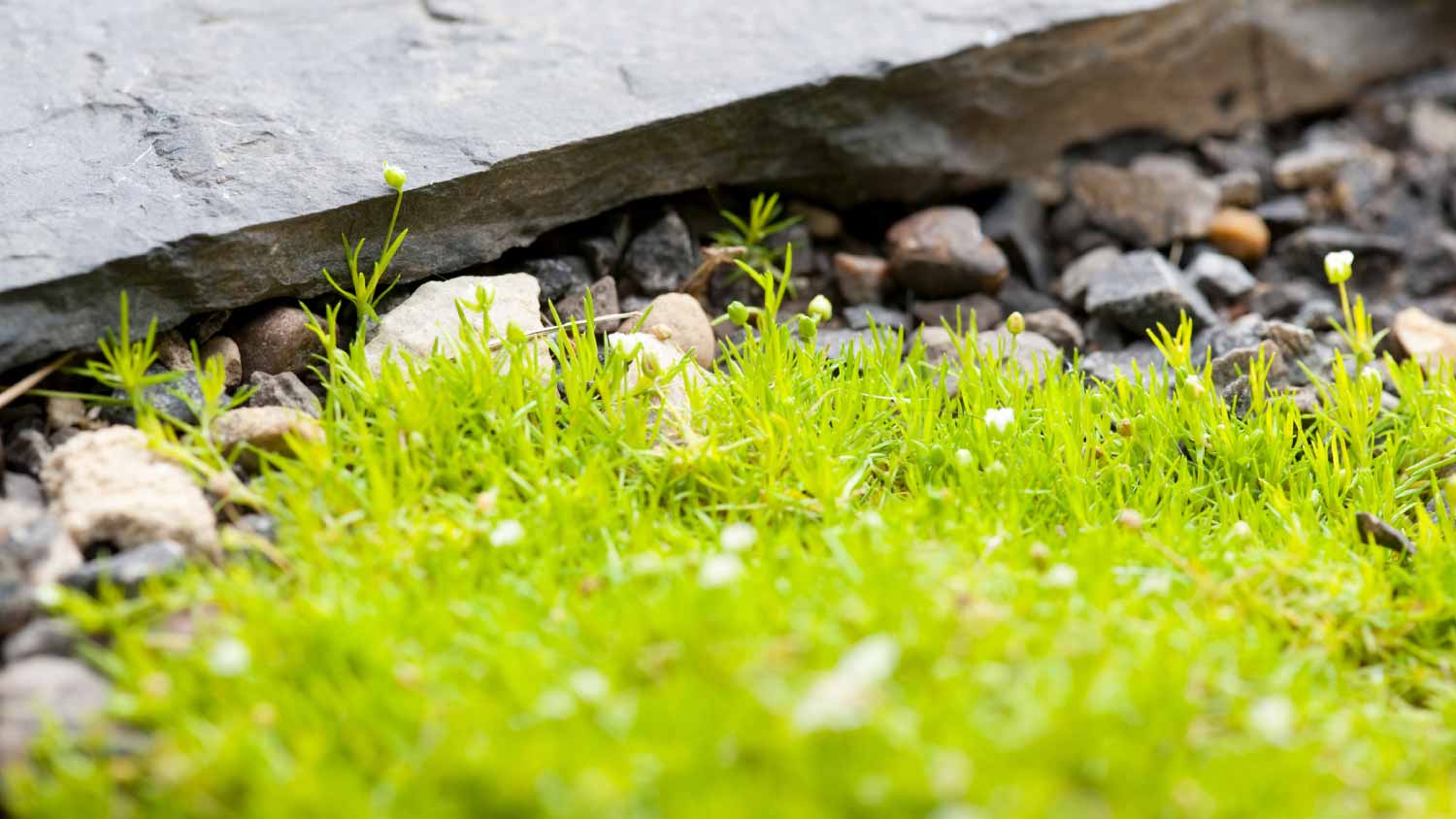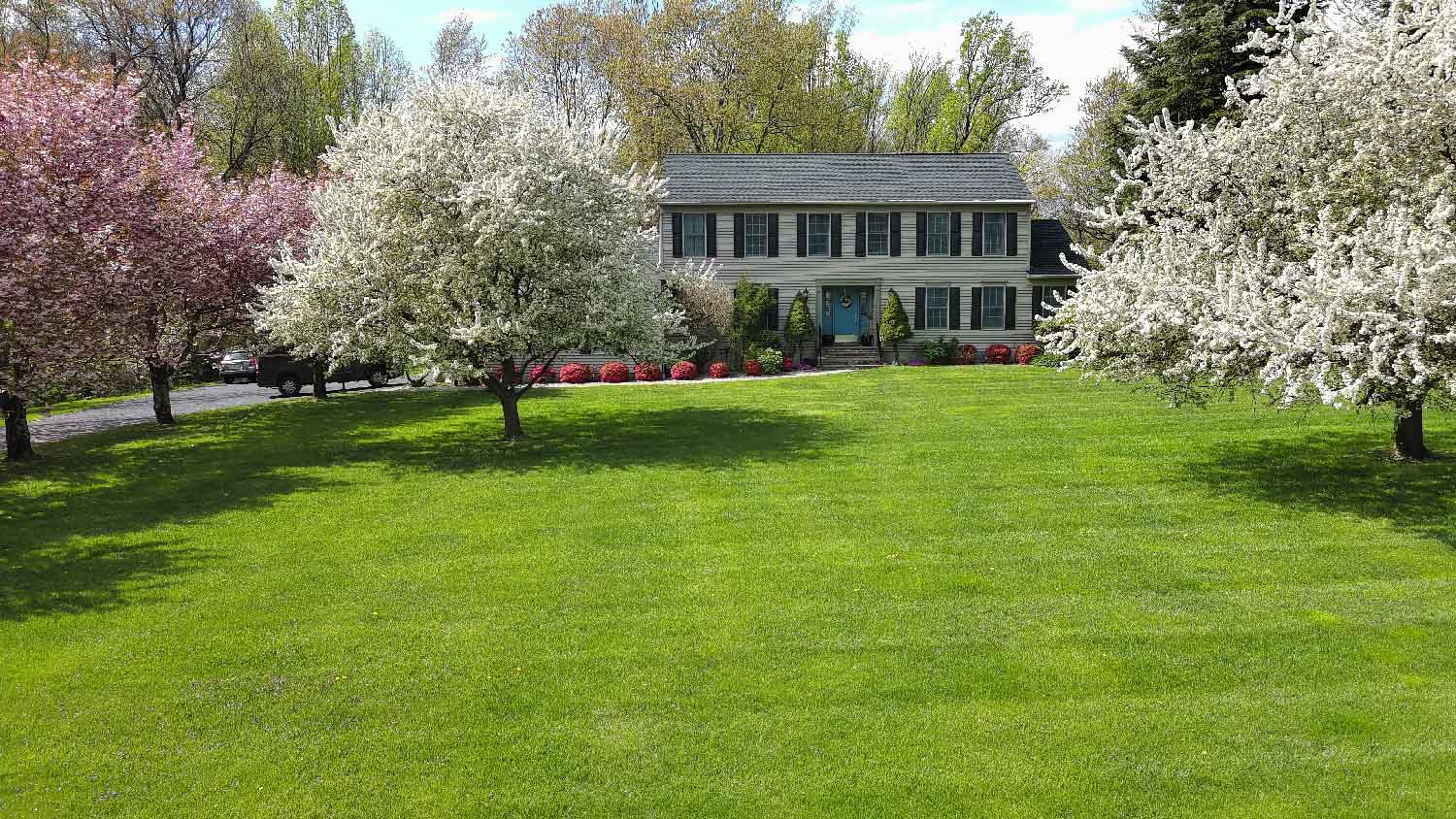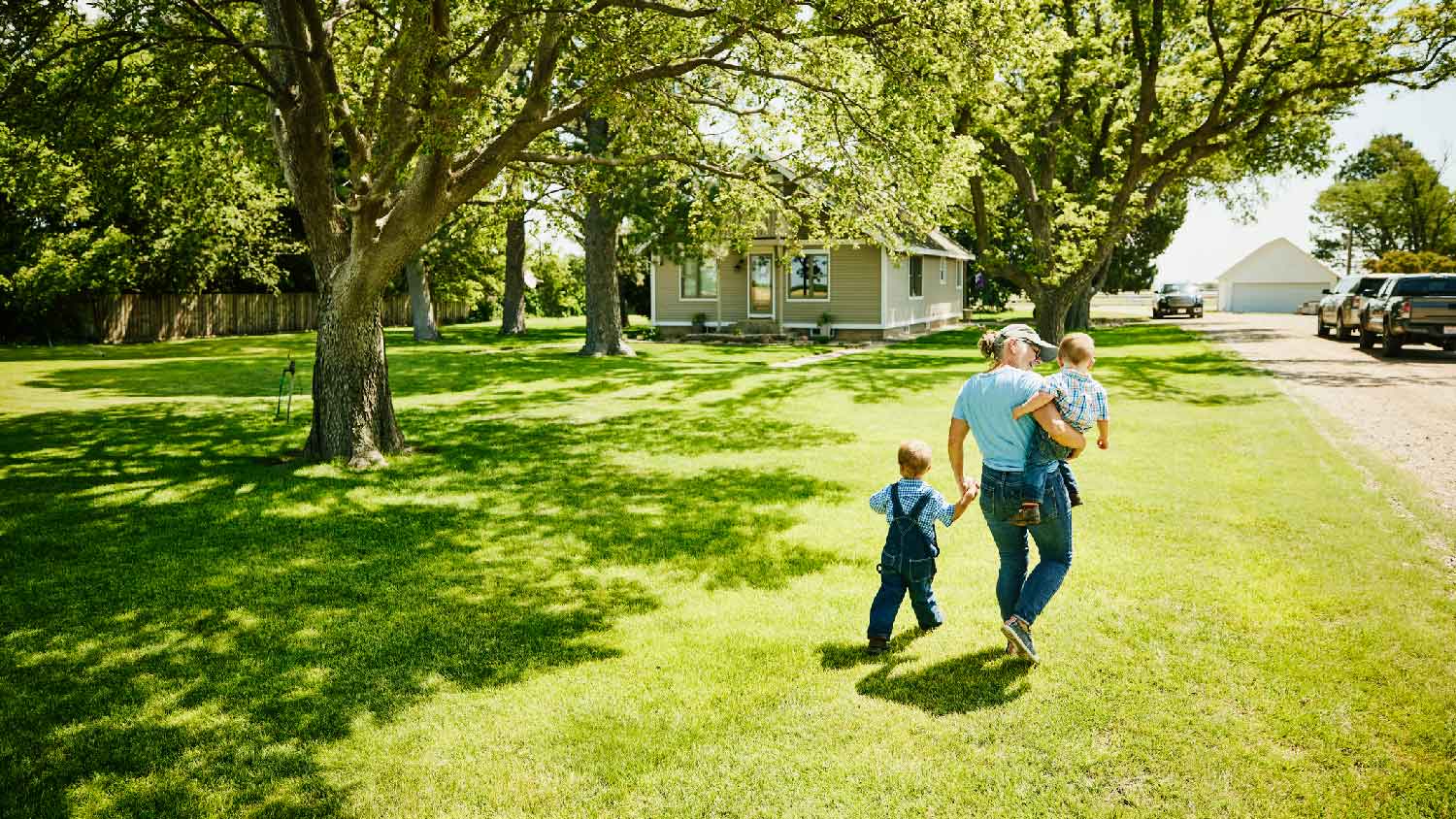Will Aeration Level Your Lawn? The Answer Is … Complicated
The solution to bumps and dips in your grass may be a simple one


Unlevel lawns are caused by soil compaction, poor grading, freezing, and even animals.
Aeration helps level your lawn if the culprit is moderate soil compaction.
Other solutions to bumpy lawns include regrading and laying topsoil.
Lawn aeration is a suitable DIY project if you have the necessary tools and abilities.
When you gaze out at your lawn, do you find it to be uneven, bumpy, or difficult to mow smoothly? If so, you may be wondering, "Will aeration level my lawn?" It's a common question among those looking to improve the appearance and functionality of their yards. Lawn aeration is a well-known technique for enhancing grass health and soil quality, but its impact on leveling your lawn depends on the underlying issues causing the unevenness. Let’s dig into the causes of a bumpy lawn, what lawn aeration is, and whether it can help level your yard.
What Causes a Bumpy Lawn?
Before exploring the role of lawn aeration in leveling your lawn, it's important to understand the factors that contribute to a bumpy yard or lawn depressions. After all, the root cause of your lawn’s problem will determine if aeration will actually help to level it. Uneven terrain can result from various problems, so let's take a closer look at each of these factors.
Soil Compaction
Soil compaction occurs when the soil particles become tightly packed together, reducing pore space and limiting the movement of air, water, and nutrients. This can lead to unhealthy grass, poor drainage, and even a bumpy lawn in some cases.
Several factors can lead to soil compaction, including:
Heavy foot traffic: Frequent walking, playing, or running on the lawn can compress the soil, especially when the ground is wet.
Heavy rainfall: Excessive rain can saturate the soil and make it more prone to compaction when walked on.
Surface pressure: Parking vehicles or heavy equipment on the lawn can significantly compact the soil beneath, leading to unevenness.
Poor Grading
Grading refers to the slope or contour of the ground. If your yard has poor grading, it means the land isn't leveled correctly, which can result in uneven areas. Poor grading often leads to water pooling in certain spots, making the lawn soggy and challenging to maintain.
Freezing and Thawing Ground
In regions with cold winters, the ground may freeze and thaw repeatedly. This freeze-thaw cycle can cause the soil to heave and settle, leading to unevenness in the lawn's surface. The expansion and contraction of the soil can create small mounds and lawn depressions.
Burrowing Animals
Burrowing animals such as moles, voles, and groundhogs can wreak havoc on your lawn. Their tunnels and burrows can create uneven terrain with raised ridges and sunken areas.
Will Aeration Level My Lawn?
The short answer is that aeration can help level your lawn. For example, if your lawn is bumpy primarily due to soil compaction, aeration may be highly effective in leveling it. By creating holes in the compacted soil, aeration allows for better air and water movement, promoting grass root growth and gradually leveling the surface.
However, aeration is not a guaranteed fix for all types of unevenness. An example would be in lawns with grading issues. While aeration can improve drainage in areas with poor grading, reducing the risk of water pooling and creating a more even lawn, it won't alter the fundamental grading of the land. In severe cases of poor grading, you may need to consider regrading your yard or adding topsoil to achieve a truly level surface.
Likewise, aeration can mitigate some of the unevenness caused by freeze-thaw cycles and burrowing animals by promoting better soil structure. Still, it may not completely eliminate the effects of ongoing ground movement.
DIY vs. Hiring a Pro for Lawn Aeration

Once you've decided that aeration is the right approach to address your lawn's unevenness, the next question is whether to tackle it as a DIY project or hire a local lawn aeration service. Both options have their advantages and considerations.
DIY aeration is cost-effective since renting an aerator is generally more budget-friendly than hiring a professional. Furthermore, it offers a certain level of convenience since you can schedule and carry out the aeration on your own timetable. However, it comes with its downsides. The physical effort required can be quite demanding, especially if you have a large lawn. Moreover, proper skill is required to aerate your own lawn, and improper aeration can lead to unintended consequences.
While the cost of aerating your lawn is a hit to your home maintenance budget at around $140 on average, professionals bring expertise to the table, ensuring that your lawn is aerated effectively. They can also save you time and effort, and the pros come equipped with the necessary tools and machinery.
If your problem can’t be solved with aeration, it’s a good idea to reach out to a local landscaping company as soon as possible to see what else you can do about the troublesome bumps in your yard.
Frequently Asked Questions
The frequency of lawn aeration depends on factors such as soil type, yard traffic, and lawn health. In most cases, annual aeration is sufficient to maintain a healthy lawn. However, if your lawn experiences heavy use or soil compaction issues, you may consider aerating twice a year. Keep an eye on your grass and soil conditions to determine when aeration is needed to keep your lawn in its best shape.
The ideal time to aerate your lawn depends on your grass type and regional climate. For cool-season grasses, such as Kentucky bluegrass and fescue, early fall or early spring is recommended. Warm-season grasses, like Bermuda and zoysia, are best aerated in late spring or early summer. Aeration during the active growing season of your specific grass type will yield the best results, promoting healthy root development and overall lawn vitality.
Aeration is most effective when the soil is slightly moist but not excessively dry or waterlogged. If your lawn's soil is extremely dry, consider watering it a day or two before aeration to facilitate the process. Conversely, avoid aerating when the soil is saturated or excessively wet, as it can lead to poor aeration results and potential damage to your lawn. Finding the right moisture balance is crucial for successful lawn aeration.





- Does Liquid Aeration Work? What to Know Before You Start
- Should You Mow After Aeration? How Long to Wait and Potential Pitfalls
- 7 Benefits of Aerating Your Lawn and Why You Should Add It to Your Lawn Care Regimen
- Who Can I Hire to Aerate My Lawn and How Much Does It Cost?
- What to Do After Aerating Your Lawn: A Post-Aeration Checklist
- A Yard-Lover’s Guide on How Deep to Aerate Lawns for the Lushest Grass
- How Often Should I Aerate My Lawn? How to Help Your Yard Breathe Better
- Do I Need to Aerate My Lawn for Healthy Grass?
- 11 Must-Know Lawn Aeration Tips for the Greenest Grass on the Block
- Liquid Aeration vs. Core Aeration: What’s Right for Your Lawn?










